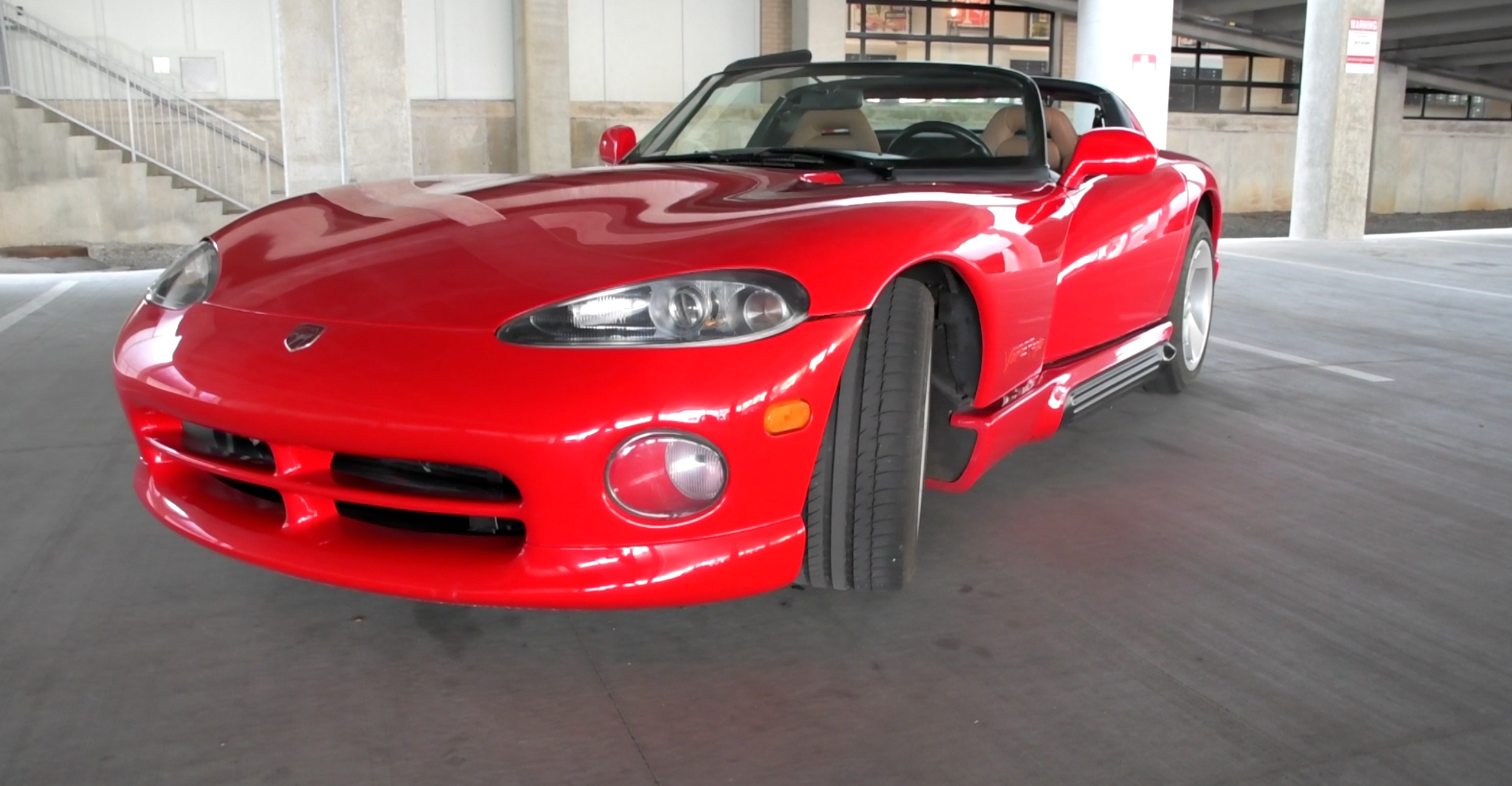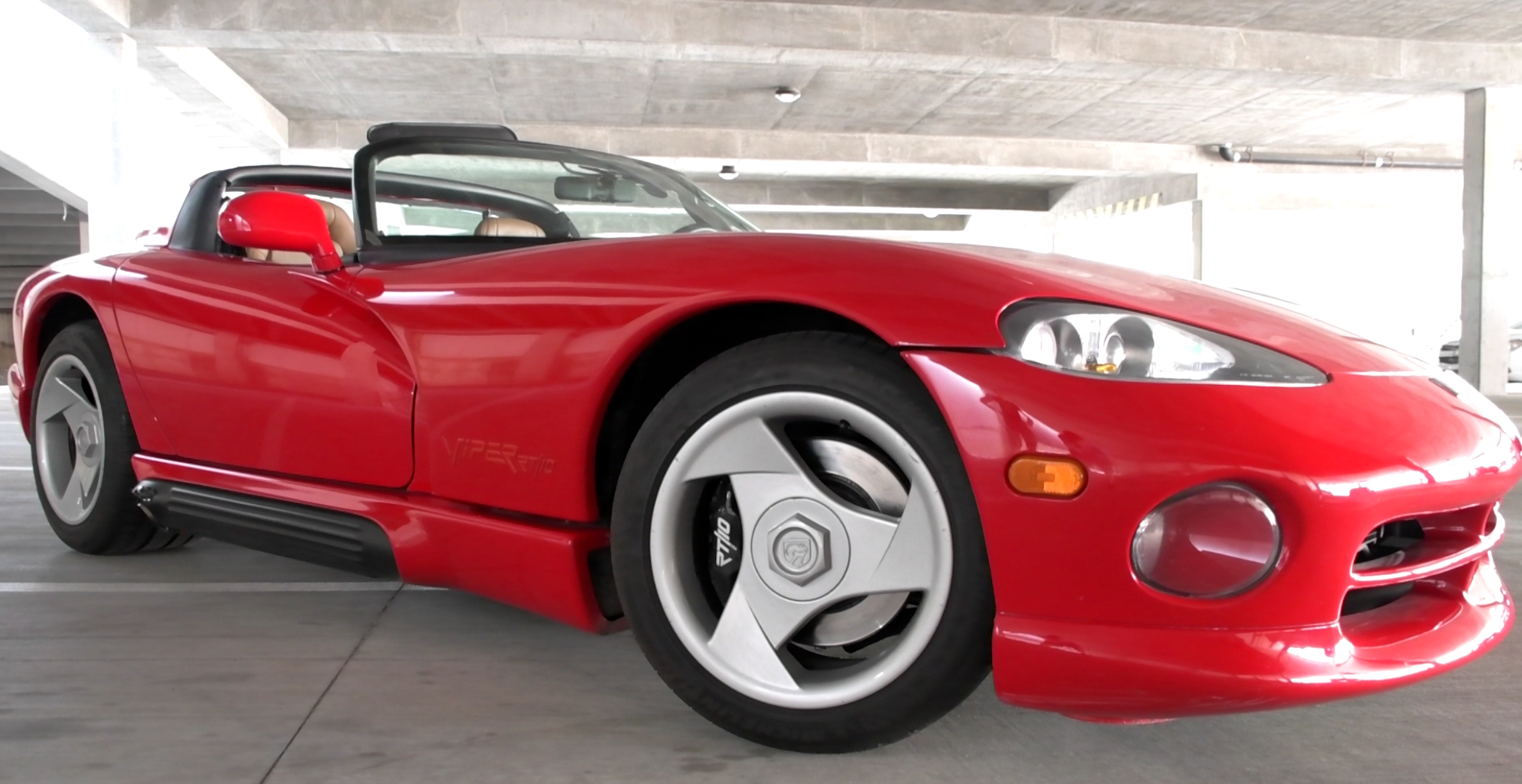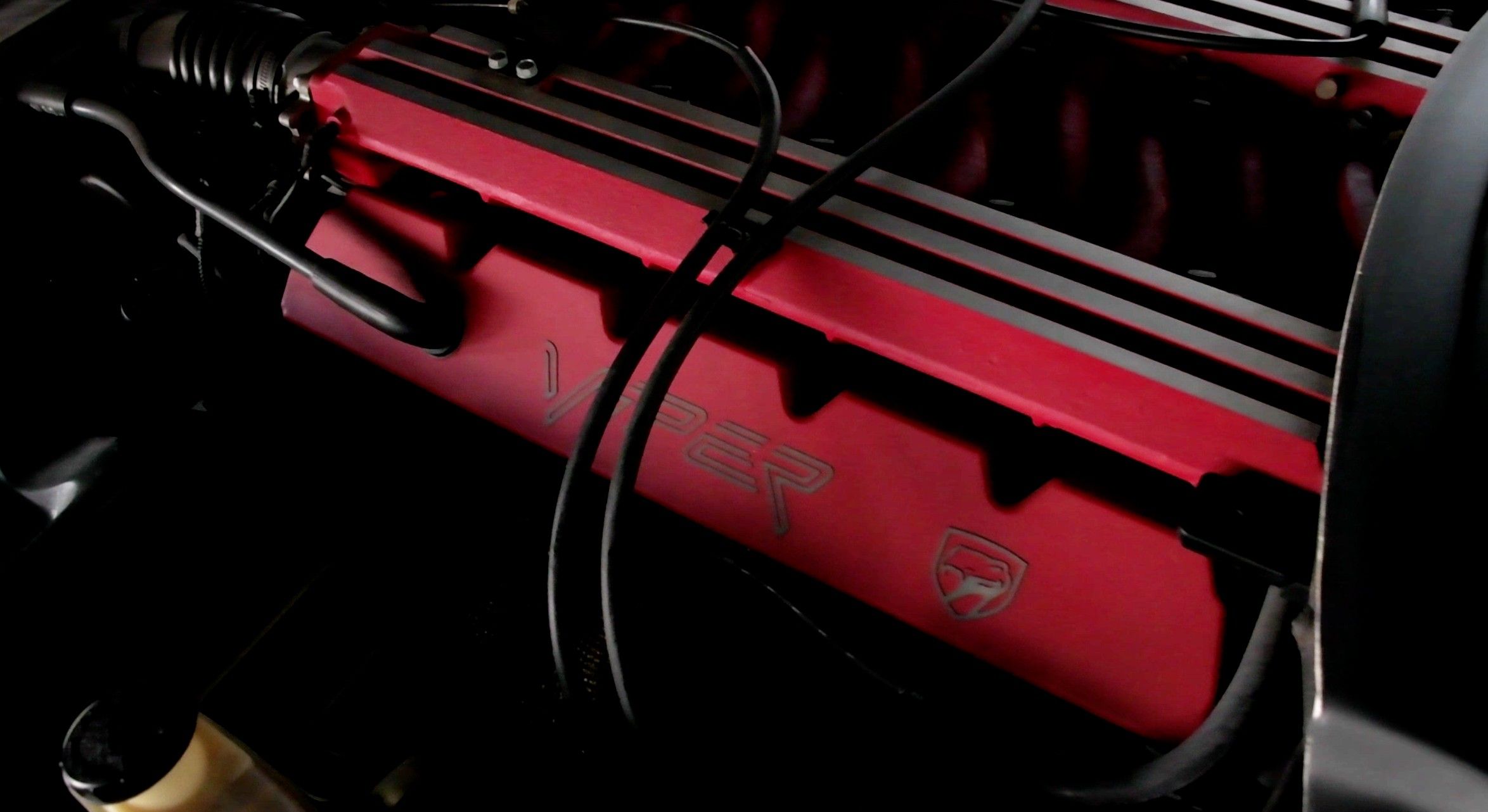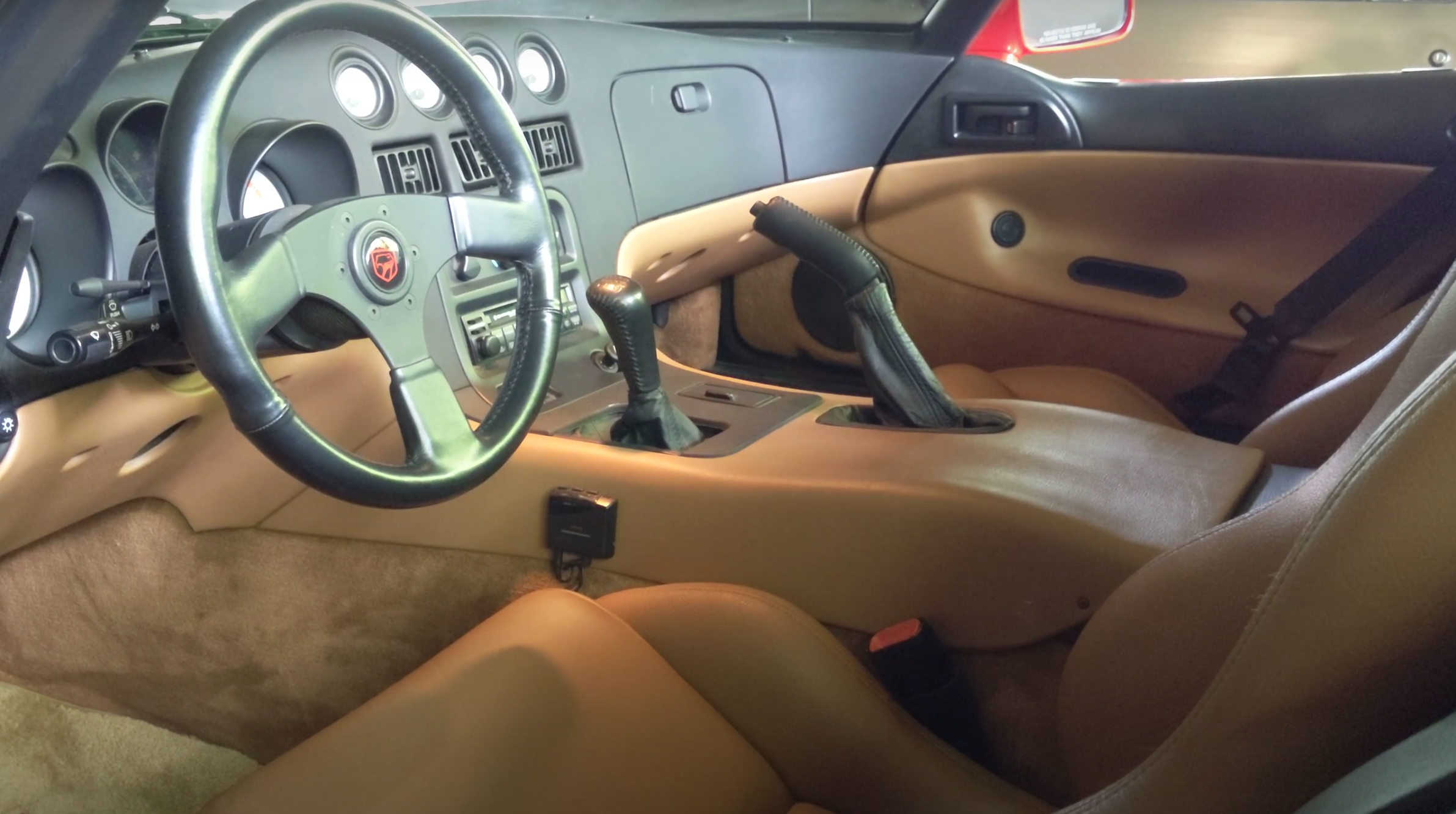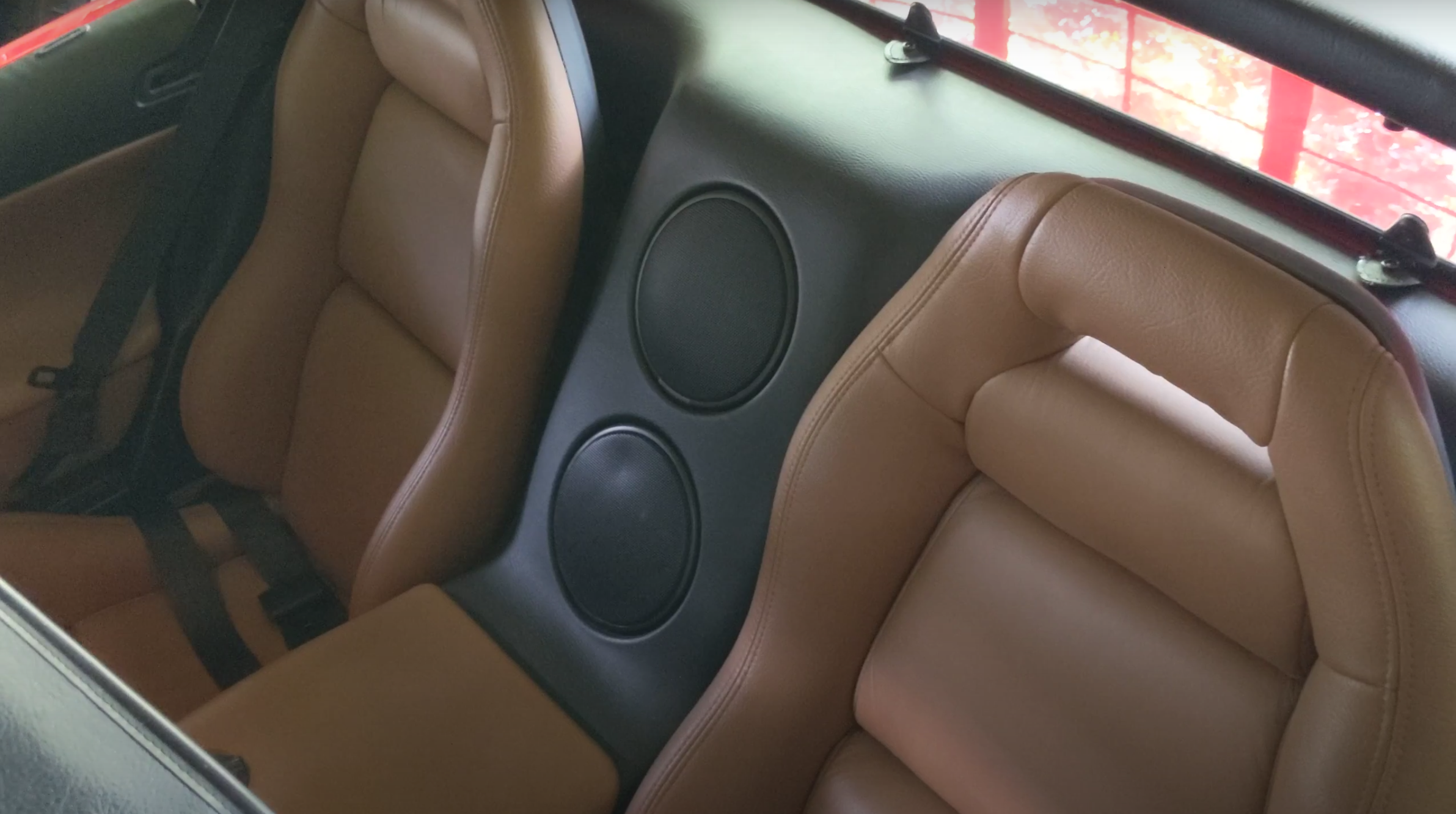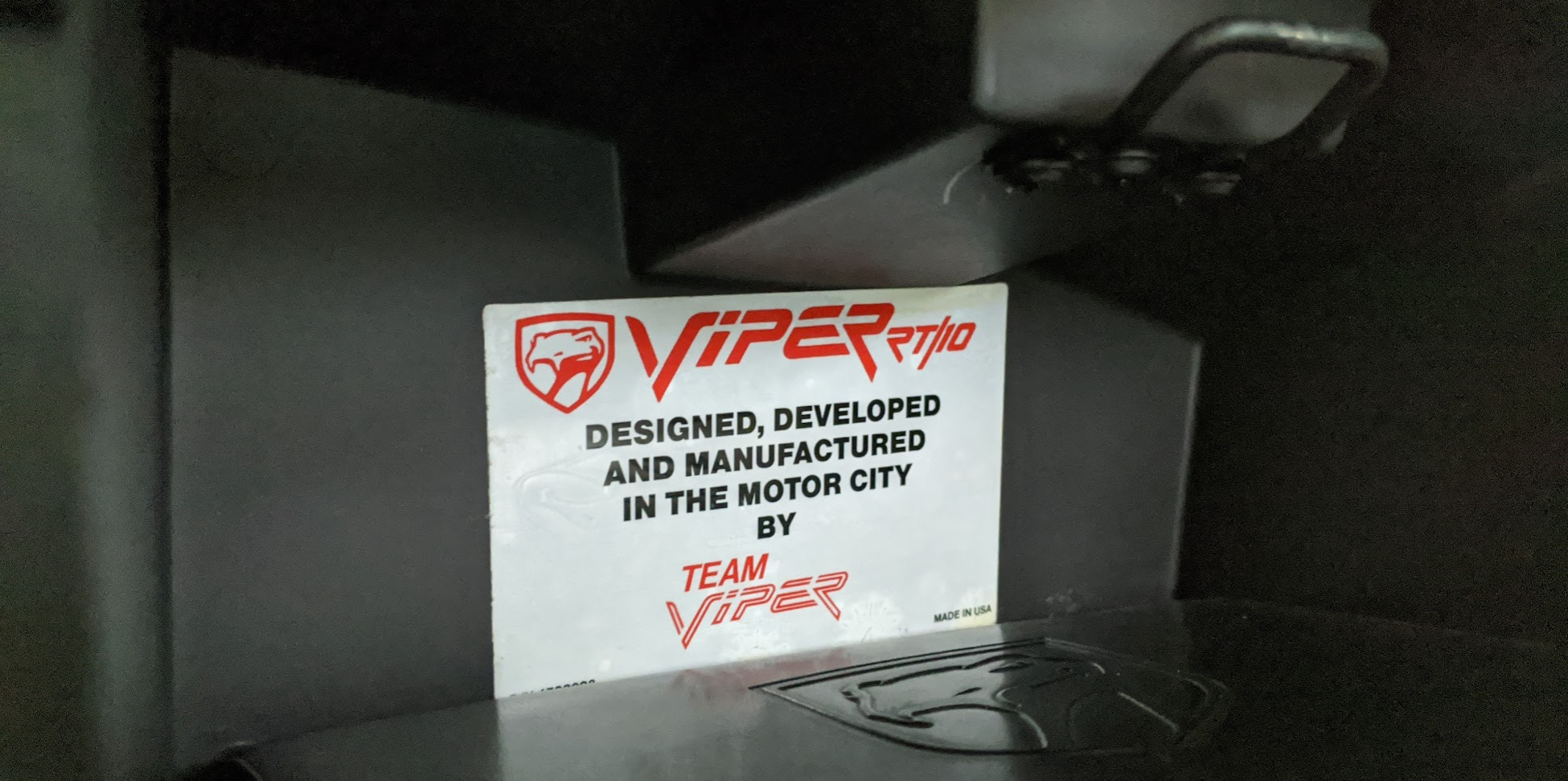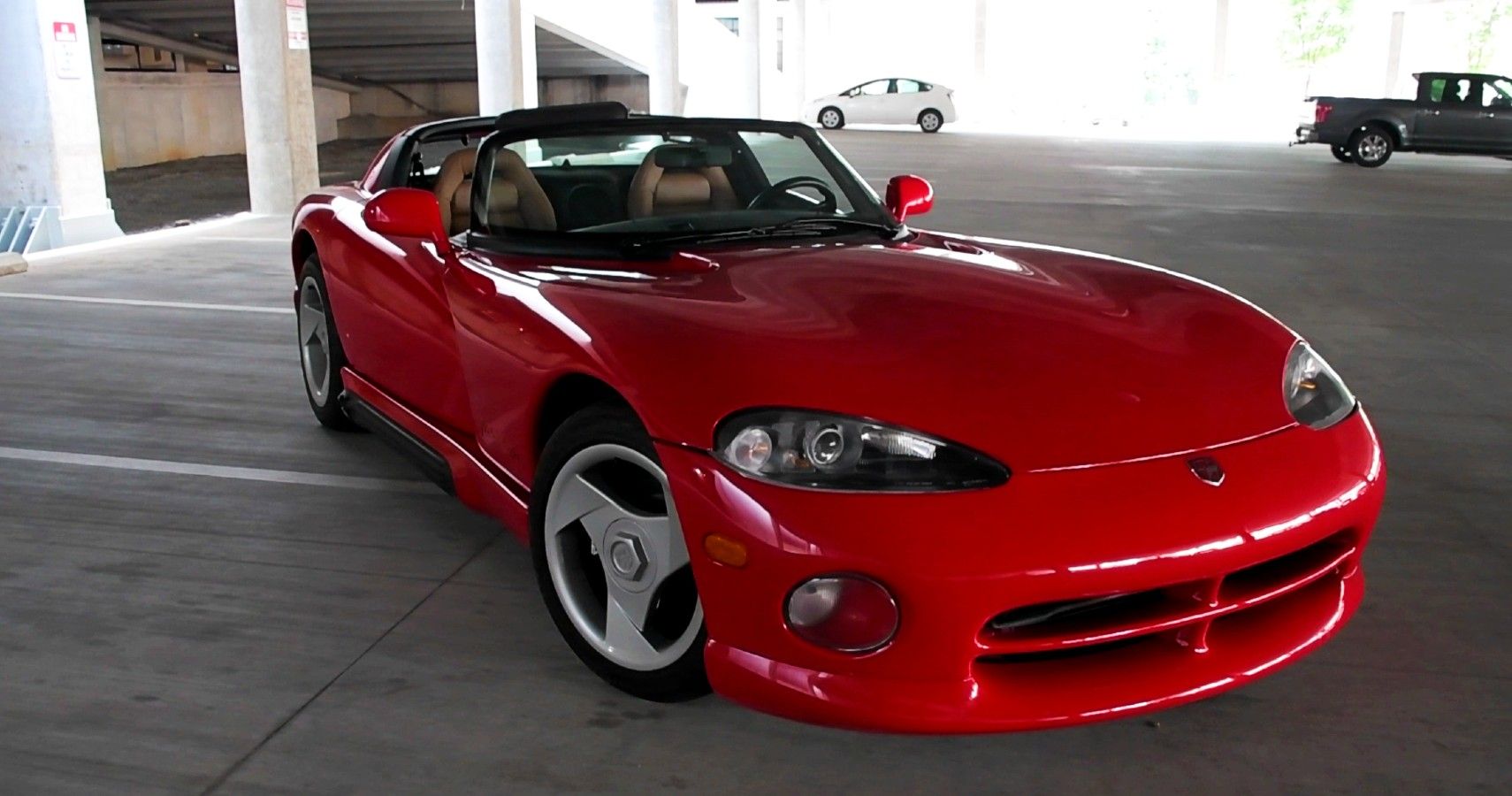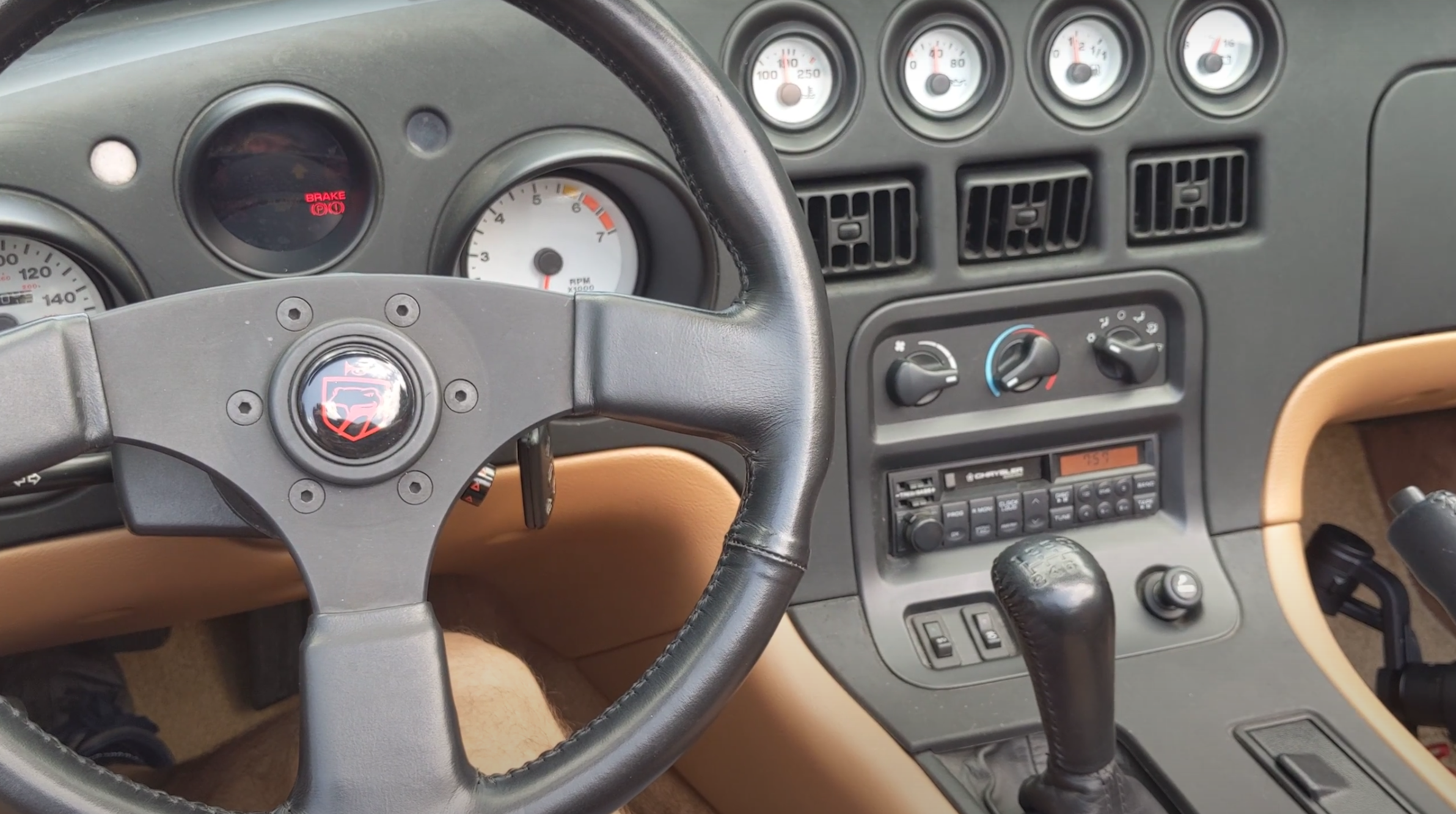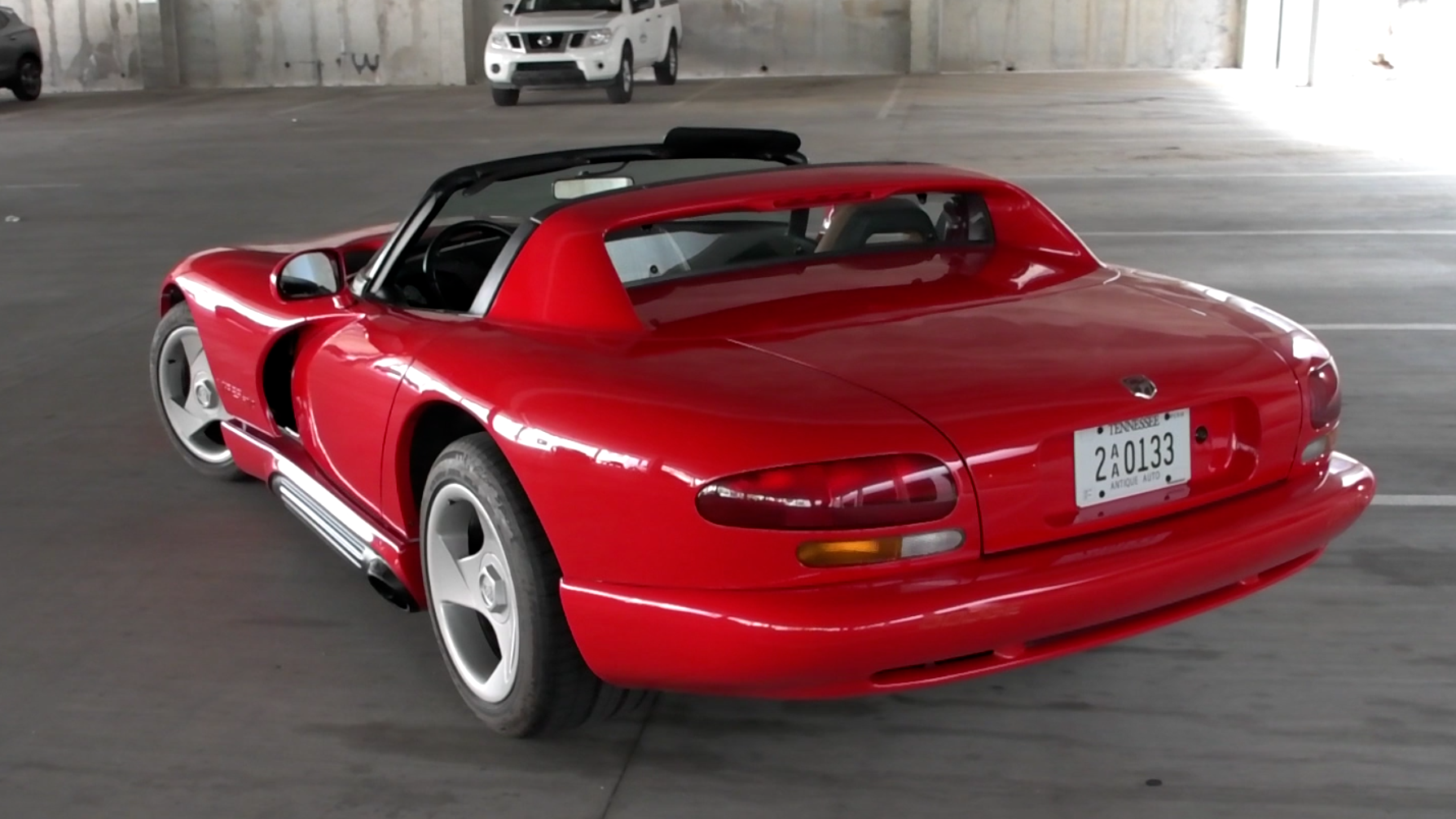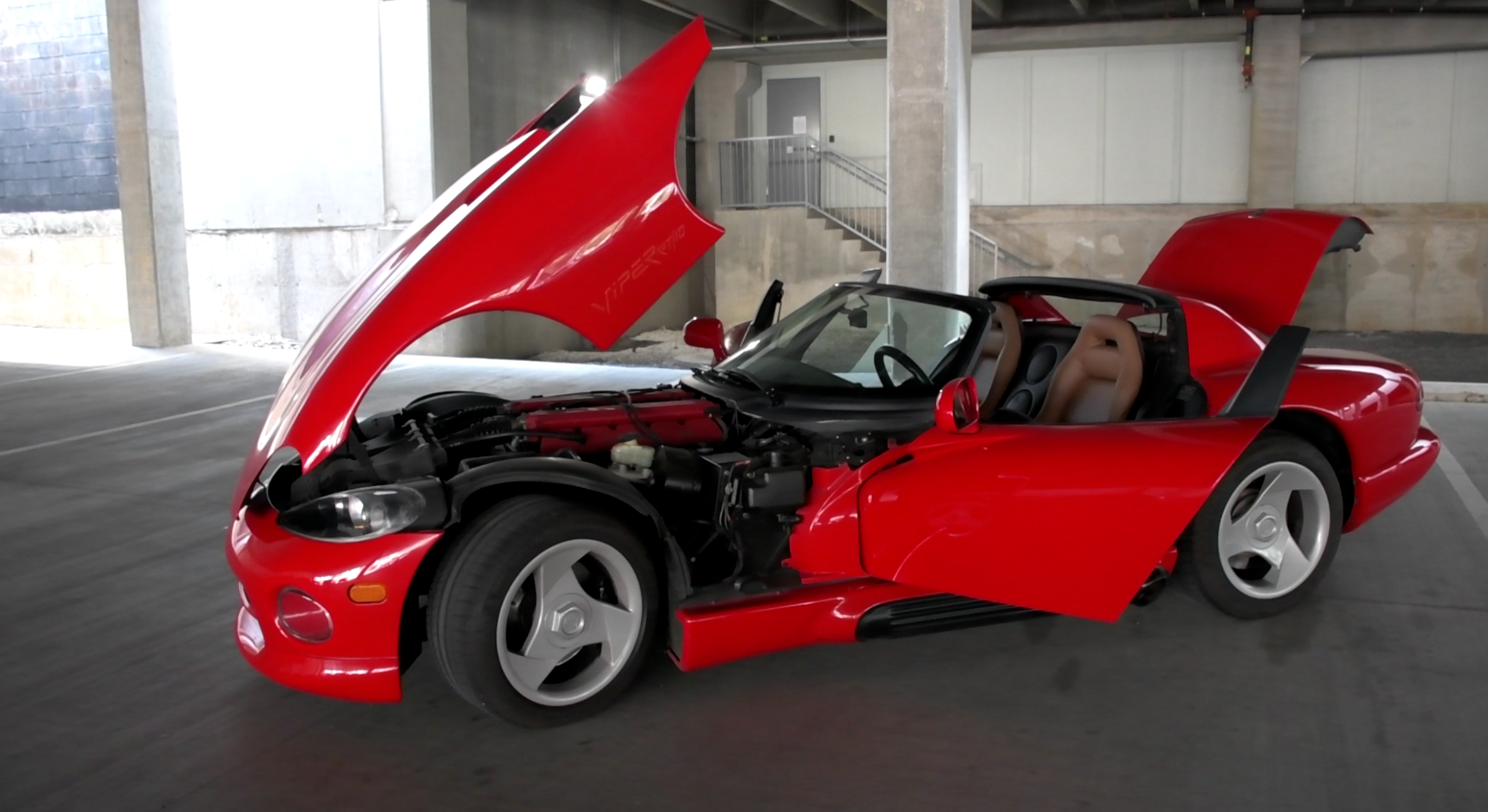There's a line of demarcation that very few sports cars dare to tread closely to. It's a line of compromise where outright speed is too much of the focus. Where comfort, civility, and good manners are lionized. It's a line that the original Dodge Viper ignored entirely. On a recent trip to the incredible Lane Motor Museum, I had the chance to drive this piece of American automotive history. And the truth about this wild-looking car is that ultimately, the Dodge Viper RT/10 is a lovable brute.
The Dodge Viper: A Legend Is Born
Bob Lutz is a man after the heart of every speed-addicted individual on the planet. He appreciated the way Carroll Shelby crafted the iconic Cobra so much that he wanted to follow in those hallowed footsteps. He went so far as to name his creation something similarly equipped with scales, the Viper. But what some forget is just how appropriate the Viper is as a successor to the Cobra.
Both featured a small overall footprint and a big powerful engine. Both were convertibles that looked shocking on the road at the time. And both could absolutely blow the doors off of nearly anything else that had the misfortune of crossing their path. The Viper even has the same types of mythical lore associated with it. The engine is often underestimated or overestimated. It's not a truck engine as some think, and neither is it a Lamborghini motor as others believe.
It shares some architecture with a truck engine. In addition, it was co-developed with Lamborghini, which was owned by Chrysler at the time and knew so much about aluminum casting that they were integral to getting the Viper's engine right. Still, it's not just the engine that makes this car so special—it's how that engine delivers power, is packaged, and how it makes you feel, that continue to keep this car in the lexicon.
The Viper's Brutalist Interior
There's no better word to describe the inside of the Dodge Viper than simple. Straightforward is too wordy, it goes to further lengths than the cabin of the Viper. Getting in requires reaching into the cabin to release the door handle that's a bit too reminiscent of the Chrysler Voyager my parents had. Once the door starts to open, be sure to avoid the giant b-pillar-esque protrusion that holds the seat belt. Later cars improved upon this by moving the belts to the middle of the vehicle.
Once inside, the Viper is actually quite spacious. Of course, the lack of a roof helps out taller folks like me, but legroom was ample as well. The footwell is indeed a bit cramped, so much so that the pedals are pushed further towards the door than most would guess. The dash harkens back to the Cobra in its own special way. It's simple, without a single frill, and communicates just the information you'll need for going fast lap after lap. Truthfully, it feels a bit cheap since everything in view is plastic. Every dial, button, and piece of switchgear is directly sourced from other Chrysler products. The saving grace is the seating. While undersized for some, they're soft, supportive, and the leather is supple. There's even a cool Easter egg if you know where to look.
Open the glove box and there it is. A short but special message from the design team of the Viper. Lutz allowed a team of some 50 individuals to create this animal, and their fingerprints are all over it. It was their love and appreciation for building something so wild that is far more obvious by looking at the snakeskin that forms the exterior of this car.
An Aggressively-Designed Sports Car
It's easy to forget that when the Viper arrived, its closest competitors looked like they'd all been designed with nothing more than a ruler. Some of the most powerful American cars on sale in 1991 were the Corvette, the Mustang, the Camaro, the Firebird, and the Dodge Stealth. Each one of them, aside from the Mitsubishi sourced Stealth, feature almost no curves. Even the Stealth isn't particularly curvaceous. That's why the Viper RT/10 had such a visceral impact when it was released.
Not only is it nearly the exact opposite of cars from the time, featuring nearly no straight lines anywhere. But it managed to do that while also being attractive and muscular. From each and every angle, the Viper exudes a confident, defiant presence. The hood and side slits are built into one single piece and complement one another brilliantly. Together, they form a design element that is so instantly recognizable as "Viper" that when Dodge built the fifth generation of the car in 2013, they went back to the same design (seen here) after mistakenly abandoning it for the third and fourth iteration.
If there's anywhere that the design suffers it might be the rear end, but the combination of the incredibly low roofline and the super-wide stance work well together. They communicate very clearly that this car is one of extremes. It also tapers up a bit, much like the Cobra. And the way it blends so smoothly into the rest of the body is important. Notice how the rear half of the Viper is almost angled down toward the ground. That gives the car a more aggressive stance that makes it look fast and intense even when it's standing still. Of course, to review the car properly, I couldn't just sit in while it was standing still.
The Viper Rumbles To Life
Starting a Dodge Viper reminds you of all the truck engine comments you've ever heard about it. As it shutters to life, it's bombastic but almost disjointed. My ears tell me that might be a product of having one half of the exhaust clattering away mere inches from my brain while the other shouts from across the car. Anywhere below 3,000 rpm and most would be forgiven for struggling to identify that this was a sports car, much less one with 400 hp. The 8.0-liter V10 under the hood also produces 465 lb-ft of torque, but we might as well call it 4,650 because that's what it feels like.
From a standstill, the Viper is said to be so torque-rich that one could leave a light in fourth gear without issue. While I didn't try that, I can confirm that at 20 mph it'll fly through the entirety of fourth gear so fast that it feels impossible for this car to be 27 years old.
There's a real charm to having so much torque on tap. It's always present. At every engine speed, in every gear, no matter the throttle position, there's enough torque to scare an unsuspecting passenger. That's actually why electric cars like the Tesla Model S feel so fun. The torque is instant and it's hilarious that a car as old-school as the Viper offered a similar experience so much earlier.
The downside of so much torque is that it makes the throttle a bit twitchy. The brakes also have a tough time stopping the car until they're good and warmed up. The clutch is easy enough to operate but getting the throttle input just right took more practice than the old-school Renault Turbo 2 I drove just before it. Steering is sublime. The fat 275/45/17 profile tires on the front of the car are so big and wide that changing direction feels lightning quick and responsive to further input. The rear 335 section tires are wider than the stock rubber (Both front and rear) on the 2021 Hellcat Redeye. That's great because, unlike the Hellcat, the Viper isn't beset upon by such nannies as traction control, anti-lock brakes, or stability control.
No, the Viper is exactly as dangerous as its namesake might suggest. Put the pedal down just a bit too early during hard cornering, and its tires give you an audible warning that they're ready to strike should you come any closer to the limit. Wait patiently for the right moment though, and it rewards its driver with the ability to reach the next corner with such gusto that its lack of refinement won't come to mind. The noise coming from the notoriously burny side-pipes speaks to the same kind of theater found in cars like the TVR S2, but the difference here is that the Viper has too much power for a Sunday cruise. It wants you to go faster. And it delivers when you agree.
Skillfully Piloting The Dodge Viper
Hammers are underrated. In fact, in most of our hands, we're downright dangerous to ourselves. Who of us hasn't smacked our own thumb with one? In the hands of a skilled craftsman, though, a hammer can be a tool of supreme capability. They can even be a weapon of sorts. That's what the Dodge Viper RT/10 is. It's a bit of a blunt instrument, but it's a beautiful one. And it's certainly dangerous, but the direction that such violence is aimed towards depends entirely on who's wielding the weapon.
Special Thanks: Lane Motor Museum, @GingerlyCaptured

